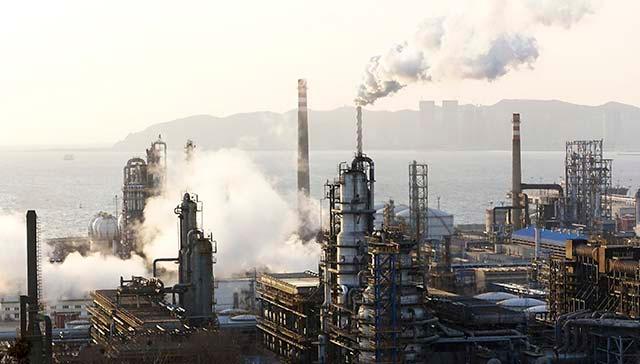India's industrial output in December contracted for a second consecutive month, adding to the confusion on the veracity of the data for third-quarter economic growth.
In more bad news for the government, a second set of data on Friday showed retail inflation accelerated to a 17-month high in January.
The Index of Industrial Production shrank 1.3 per cent in December from a year earlier on the back of contraction in manufacturing. This comes after data for gross domestic product released on Monday had shown a 10.9 per cent increase in manufacturing at current prices for the October-December period.
While industrial output, which averaged 1.7 per cent growth for the third quarter, is just one part of the puzzle, factory activity data released by Nikkei previously showed manufacturing slowing in the third quarter.
The IIP data will be a big source of disappointment for the Narendra Modi government as it readies itself for its second full-term budget. Though IIP figures present a dichotomy as compared to the GDP data, which estimated the economy growing at 7.6 per cent for the current fiscal year, further revisions may put the GDP expansion well within the government’s projected range of 7-7.5 per cent.
A decline in manufacturing coupled with a contraction in capital goods production were major reasons for a drop in overall IIP numbers. There was, however, some recovery in consumer goods, mining and electricity sectors.
Inflation accelerates
Meanwhile, consumer price inflation accelerated to 5.69 per cent in January from 5.61 per cent in December, driven mainly by a rise in food prices and rural inflation.
Food price inflation for January quickened to 6.85 per cent from 6.4 per cent in December as rural prices jumped 50 basis points from last month.
While consumer inflation remaining below the RBI’s projection of 5.8 per cent for January is good news for the government, rising prices of pulses and ballooning rural inflation may prove to be more difficult to counter in coming months.
With the farm sector contracting again as per the new GDP figures, rising prices and depressed wages can lead to further stress on the rural economy.
On the other hand, the economy may be staring at a wage price spiral given that the government may announce the rollout of the seventh pay commission report that has suggested an increase in the salaries of 50 lakh central government employees by an average 23.5 per cent.
Although rising prices and falling output is certainly a dangerous trend, all eyes are now set on the budget.
If the government fails to implement its crop insurance schemes, roll out more infrastructure steps and falters on the fiscal consolidation path, one may see the rural economy’s health worsening. In the absence of government measures, the RBI could hold on to future rate cuts that can help output.
A lot would also depend on the government’s Mission Indradhanush programme to help banks, which have been reluctant to lend due to rising bad loans.





